- Home /
- Research /
- Reports & Analysis /
- As Police Raid Protests in Ukraine, Protesters Turn to Twitter and Facebook
As Police Raid Protests in Ukraine, Protesters Turn to Twitter and Facebook
Social media continues to play an important role in the protests in Ukraine. As the situation changes, social media users are adapting their strategies online to meet shifting needs as they emerge on the ground.
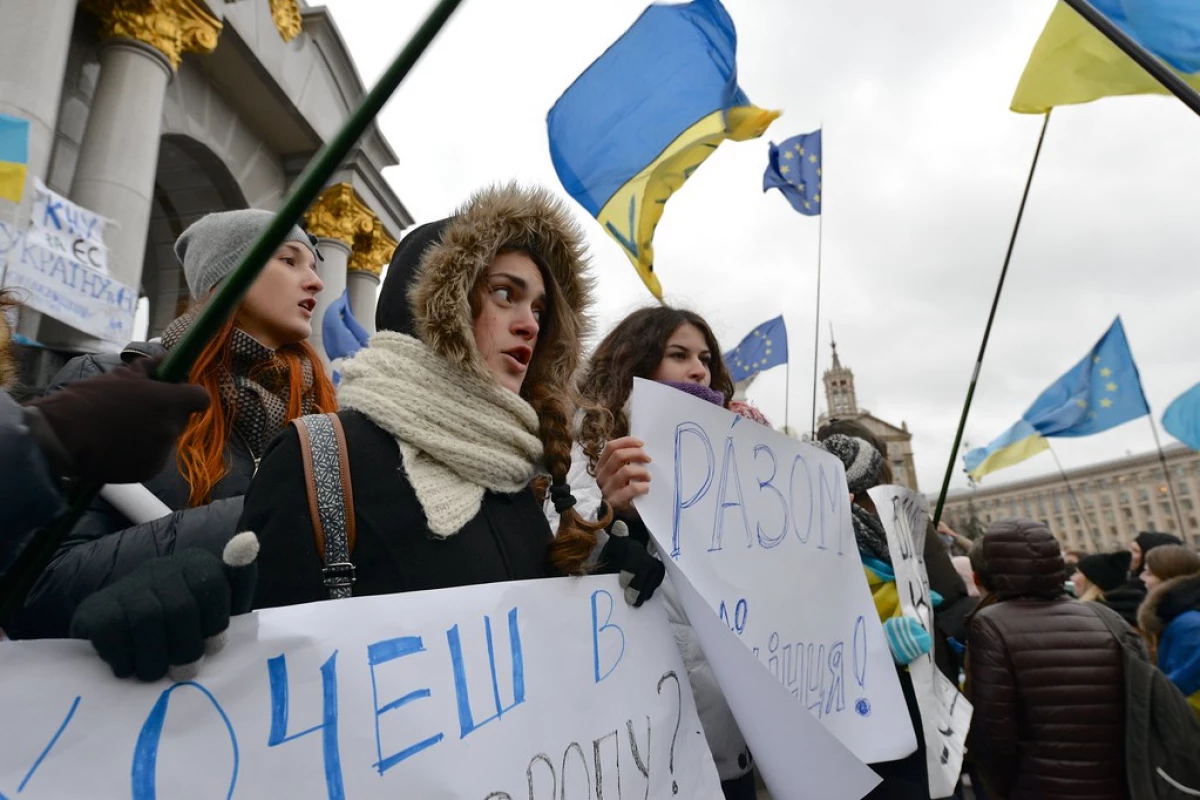
Credit: Flickr
Authors
Area of Study
This article was originally published at The Washington Post.
******
The past few days have seen a dramatic increase in the Ukrainian government’s repression of the ongoing protests in Kiev. On Monday night, the headquarters of one of the major opposition parties was raided. Then Wednesday, at about 1:30 in the morning, the police raided the protest camp in the center of Kiev where protesters have been gathered for the past several weeks, and began to systematically dismantle the protest barriers and camp structures (see photo above). We previously reported on the trends that we have seen on social media during the Ukrainian protests, but how is social media use shifting and responding to the changing situation on the ground?
First, in the past 24 hours, we have observed the highest volume of activity on Twitter since the beginning of the protests. Typically, we have seen spikes of activity during the larger weekend protests, but the activity around the raids is larger than even these spikes, reaching as much as 2,500 tweets per hour using #euromaidan (the largest single hashtag in our data set). The plot below shows the number of tweets per hour sent from this hashtag (other prominent hashtags such as #євромайдан and #евромайдан show similar dynamics). We can see the response of Ukrainian tweeters to police intervention in the sudden, substantial spike, largely in Ukrainian, coinciding almost exactly with the police beginning to clash with protesters and tear down the protest camp. First, here’s an updated figure of tweet frequency over the past two weeks:
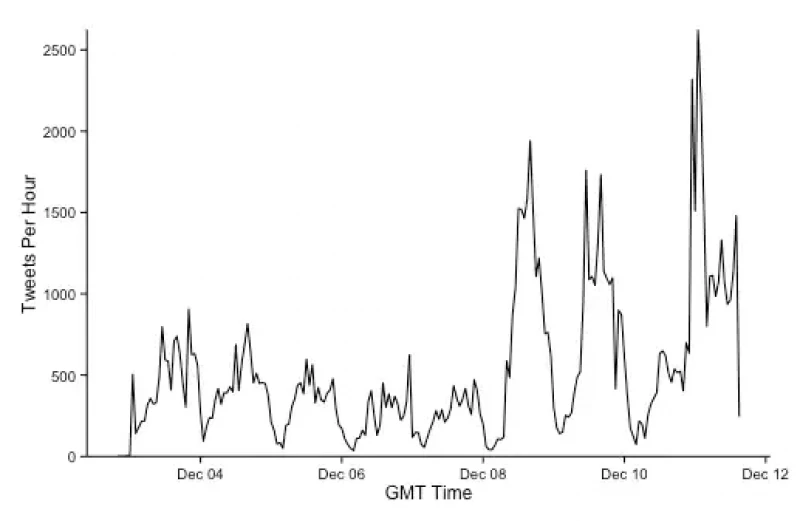
Now, here’a zoomed-in version of that figure showing only yesterday and today (Dec. 10 and 11). Note the huge spike late last night when police began dismantling the protest camp.
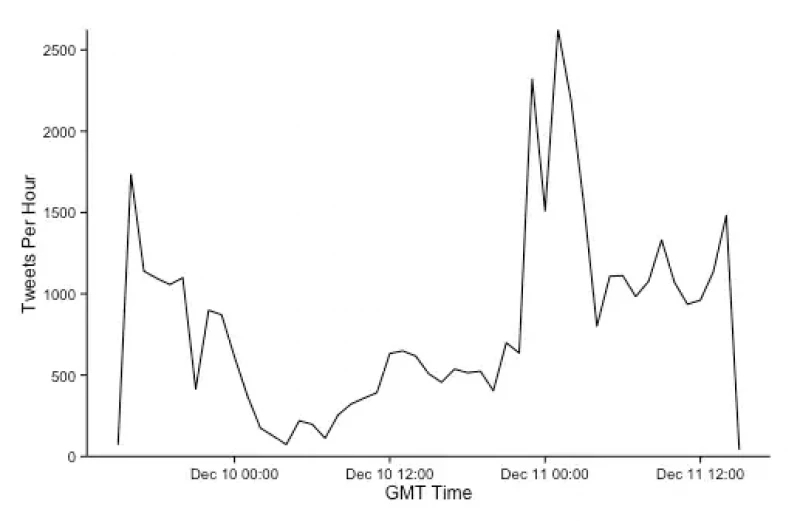
We also see a different dynamic of language use from other large days of the protest. The graph below shows the proportion of tweets in various languages across days. We can see here that during the large spikes on the weekends, there is more activity in English than in Ukrainian (although on average across the protest Ukrainian and English are used equally often, each language representing about 31% of Tweets from the main hashtags). In a previous analysis, we suggested that Twitter was being used more to speak to the international community than to communicate internally. Since Dec. 10, however, and particularly during the spike on Dec. 11 coinciding with the raids, we see a different pattern with a much stronger spike in Ukrainian language activity, as well as in Russian, but comparatively less English.
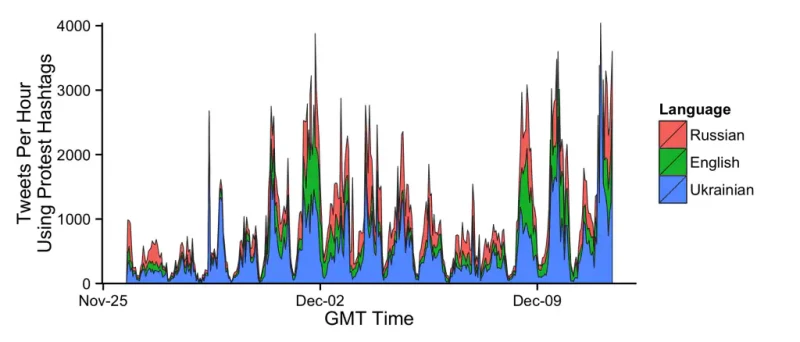
Facebook continues to represent the primary locus of organization, however. The main Facebook page, which now has 150,000 page likes, was providing timed updates on the situation as it progressed. Throughout the night, updates came every 10-15 minutes and described in detail the actions of the police, where they were located and what the dynamics in the square were.
The Facebook page is also reporting developments, such as the fact that citizens in Lviv are organizing rides to the protests from Lviv to Kiev. They have also been providing logistical information such as where there are clashes with the police, and where there is calm, aimed at people trying to get to the protests, as well as working to organize needed medical supplies for the medical center. For example, see this recent Facebook post titled “Current Needs at the Maidan,” which is the main center of the protests:
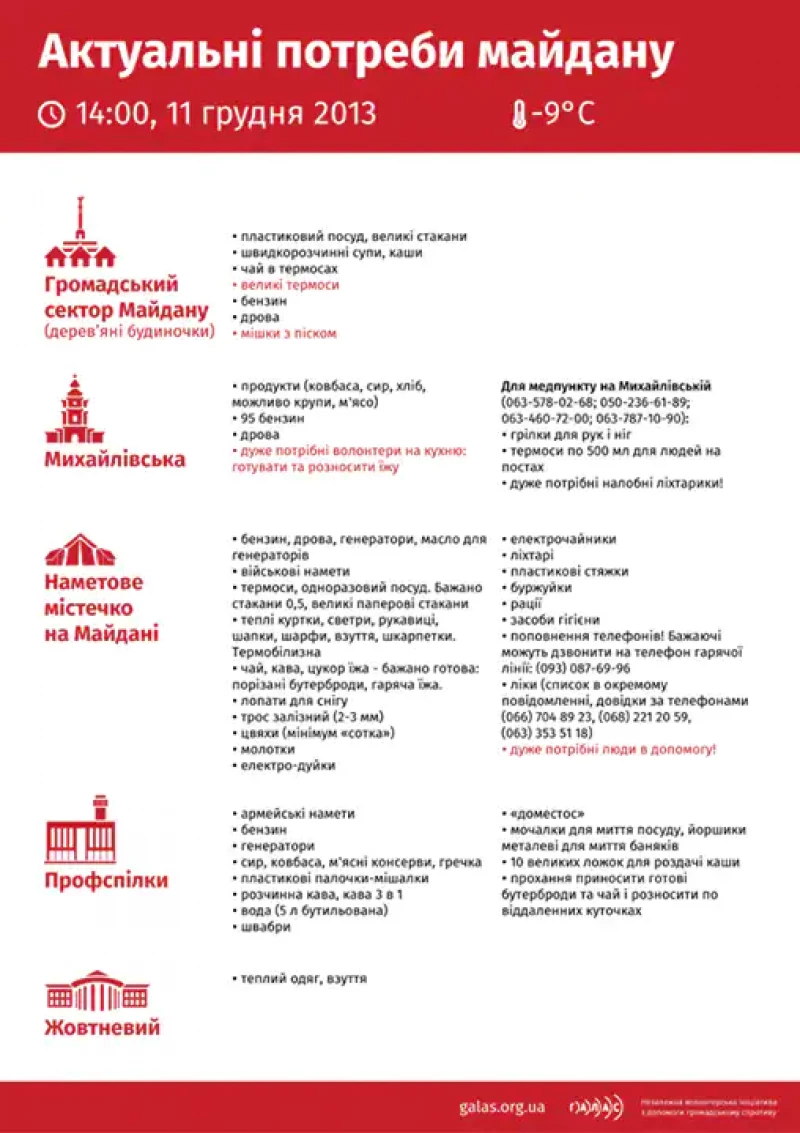
A new Facebook page established yesterday, which already has more than 2,000 page likes, is dedicated entirely to organizing rides for people from other parts of Ukraine to Kiev to join the protests. People can post that they need a ride, or post their information if they can take people, including where they are coming from, how many seats are available in their car, as well as contact information. Both Facebook and Twitter users are posting that people are coming from around the Ukraine to join the protests.
Social media has played an important role in the protests since the beginning, but what we continue to see impressively in the Ukrainian case is the ongoing adaptation to the situation as it develops. The goal of the government in raiding the protest camp and the opposition headquarters is clearly to break up the protests and bring them to an end. Instead, reports are that as the police presence increased, more protesters arrived, and eventually the police were forced to stand down. What our data indicates is that social media has been an important tool, not only for people to express their opinions about what is happening, but in the logistical organization of continued protest in the face of government repression. The increase in Twitter activity shows that social media has people talking about the protests, but the role goes well beyond that. Social media is being used to clearly communicate the situation on the ground, providing greater certainty to help people decide when and where to join the protests. Further, it is being used to organize resources and logistical assistance for those already at the protest, as well as those trying to make their way from around the country to Kiev. As the situation changes, social media users in Ukraine are adapting their strategies online to meet shifting needs as they emerge on the ground.